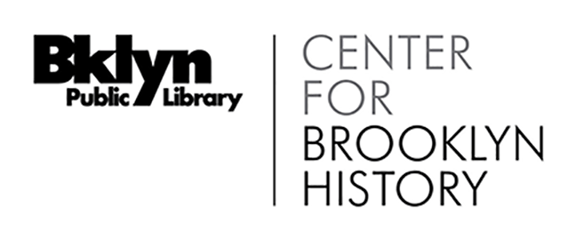Henry F. Minton scrapbook
Call Number
Date
Creator
Extent
Language of Materials
Abstract
One scrapbook compiled by Dr. Henry F. Minton of Brooklyn containing clippings, ephemera, and more relating to the prominent Brooklyn clergyman Henry Ward Beecher and his congregation, Plymouth Church.
Historical note
Brooklyn's Plymouth Church was founded in the Congregationalist tradition in 1847 in the neighborhood of Brooklyn Heights. Its first building was erected on Cranberry Street between Hicks and Henry Streets in that same year. The Church's first pastor, the charismatic orator Henry Ward Beecher (1813-1887), quickly catapulted the church to a position of national prominence and regularly filled the pews to overflowing. When the church's building was destroyed by fire in 1849, a new red brick building, known as the Sanctuary, was quickly constructed directly behind the church's original site, facing Orange Street, and opened for worship in 1850. Designed by English architect J.C. Wells, the Sanctuary was built to seat 2,800 parishioners and was distinctive for its open design, cast iron columns, and balconies, providing the feel of an auditorium more than a traditional church. The church's original building on Cranberry Street was rebuilt in 1862 to house offices, parlors, and Sunday school rooms.
During the mid-19th century, Plymouth Church was famous not only for Beecher's magnetic oratorical style and widely published sermons, but also for its role as a vehicle for the anti-slavery movement. Beecher held mock enslaved people auctions at the Church through which parishioners could actually purchase the freedom of enslaved persons, and invited some of the most distinguished abolitionists of the period, including Frederick Douglass, William Lloyd Garrison, and Sojourner Truth, to speak at the Church. Documentary evidence suggests that the Church was also a major site of activity for the Underground Railroad, the abolitionist network that secretly transported enslaved people to freedom in the North and Canada. In the early 1870s, Plymouth Church's prestige was briefly shattered when Beecher was accused of adultery, a charge that led to what would become the most widely publicized court trial in 19th-century America. Beecher was eventually acquitted in 1875, and despite the damage done to his reputation, he was able to overcome the scandal and continued to lead Plymouth Church until his death in 1887. He was succeeded by former lawyer Lyman Abbott, who resigned as pastor in 1899.
Arrangement
The scrapbook sections are foldered in order and followed by two folders of loose material from the scrapbook.
Scope and Contents
One scrapbook compiled by Dr. Henry F. Minton of Brooklyn containing clippings, ephemera, and more relating to the prominent Brooklyn clergyman Henry Ward Beecher and his congregation, Plymouth Church. Materials span the period 1847 to 1887 and include newspaper clippings and cartoons, programs, pamphlets, tickets for events, engravings, and sermons by and about Beecher. There is also one oversize broadside listing the original members of the church in 1847.
Subjects
Organizations
Genres
People
Topics
Conditions Governing Access
Open to users without restriction.
Conditions Governing Use
The materials in this collection are in the public domain. While many items at the Center for Brooklyn History are unrestricted, we do not own reproduction rights to all materials. Be aware of the several kinds of rights that might apply: copyright, licensing and trademarks. The researcher assumes all responsibility for copyright questions.
Preferred Citation
Identification of item, date (if known); Henry F. Minton scrapbook, 1977.271, Box and Folder number; Brooklyn Public Library, Center for Brooklyn History.
Immediate Source of Acquisition
Gift of Mrs. Russell Hume, 1966.
About this Guide
Processing Information
The scrapbook's spine was broken and it had broken into sections. The archivist foldered these sections separately to better facilitate safe handling and storage of the materials. Loose newspaper clippings were removed and photocopied and the originals discarded. Loose ephemera was also removed and foldered separately. The oversize broadside listing the original members of the church is broken into four pieces. It was sleeved in mylar and foldered flat in an oversize box.
